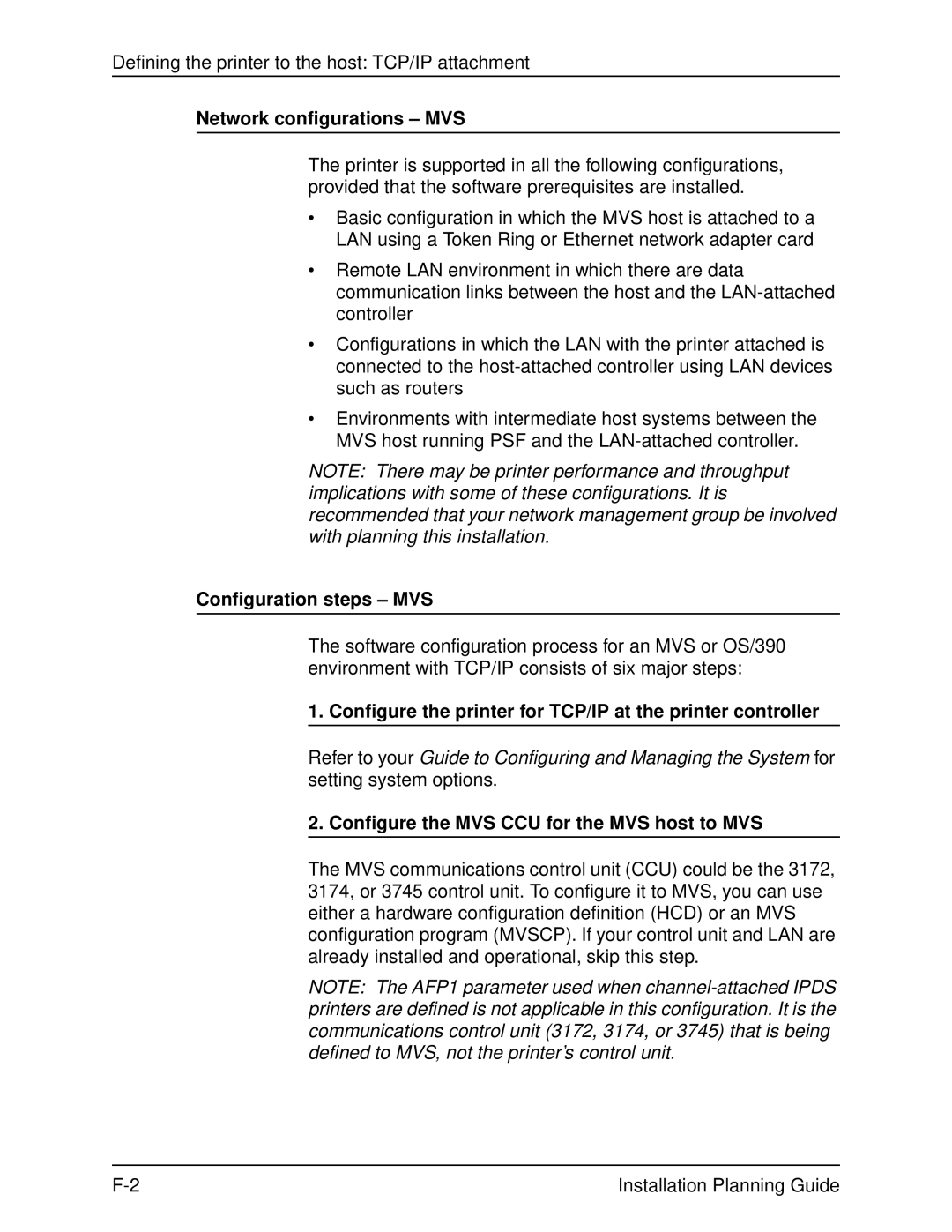
Defining the printer to the host: TCP/IP attachment
Network configurations – MVS
The printer is supported in all the following configurations, provided that the software prerequisites are installed.
•Basic configuration in which the MVS host is attached to a LAN using a Token Ring or Ethernet network adapter card
•Remote LAN environment in which there are data communication links between the host and the
•Configurations in which the LAN with the printer attached is connected to the
•Environments with intermediate host systems between the MVS host running PSF and the
NOTE: There may be printer performance and throughput implications with some of these configurations. It is recommended that your network management group be involved with planning this installation.
Configuration steps – MVS
The software configuration process for an MVS or OS/390 environment with TCP/IP consists of six major steps:
1. Configure the printer for TCP/IP at the printer controller
Refer to your Guide to Configuring and Managing the System for setting system options.
2. Configure the MVS CCU for the MVS host to MVS
The MVS communications control unit (CCU) could be the 3172, 3174, or 3745 control unit. To configure it to MVS, you can use either a hardware configuration definition (HCD) or an MVS configuration program (MVSCP). If your control unit and LAN are already installed and operational, skip this step.
NOTE: The AFP1 parameter used when
Installation Planning Guide |
